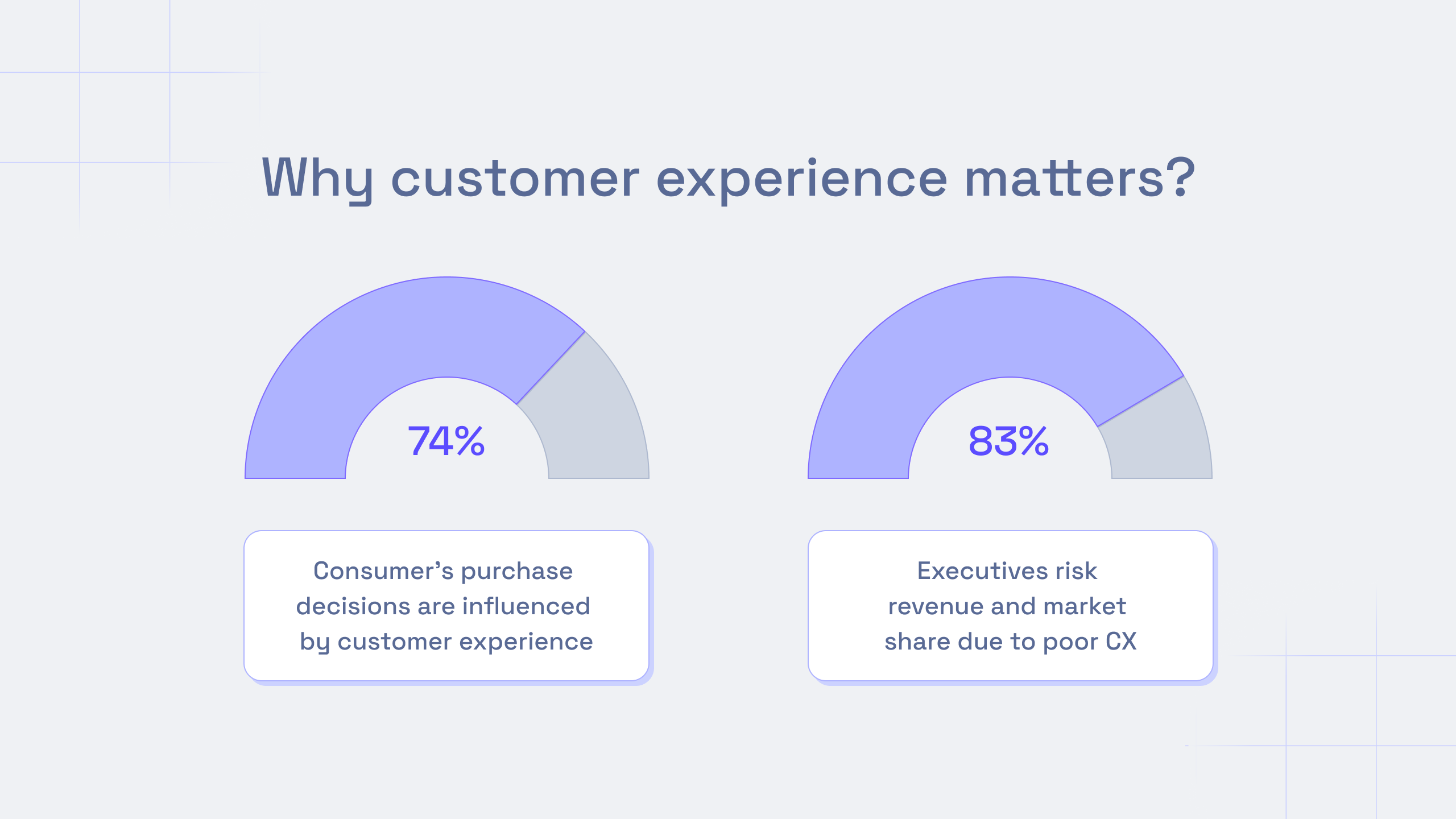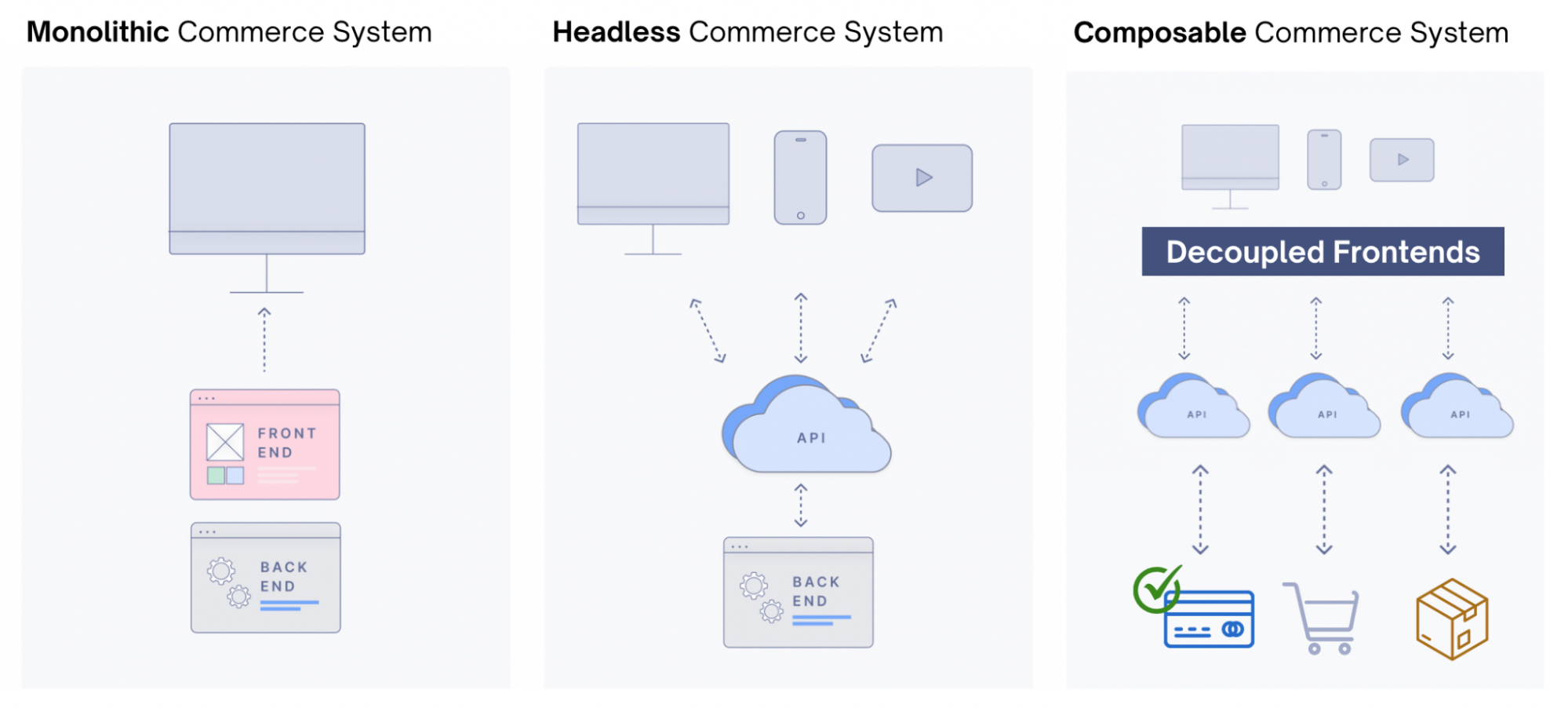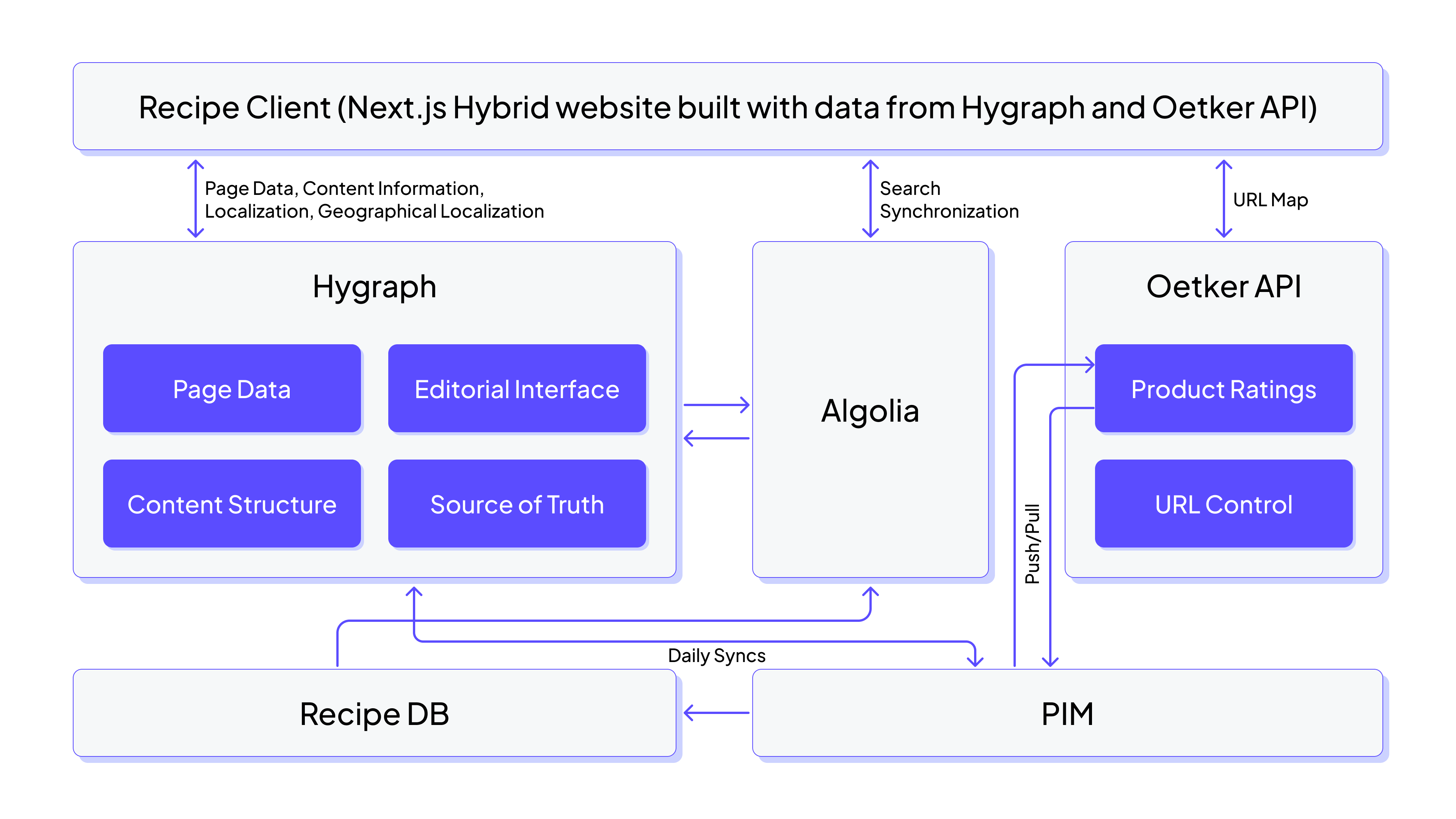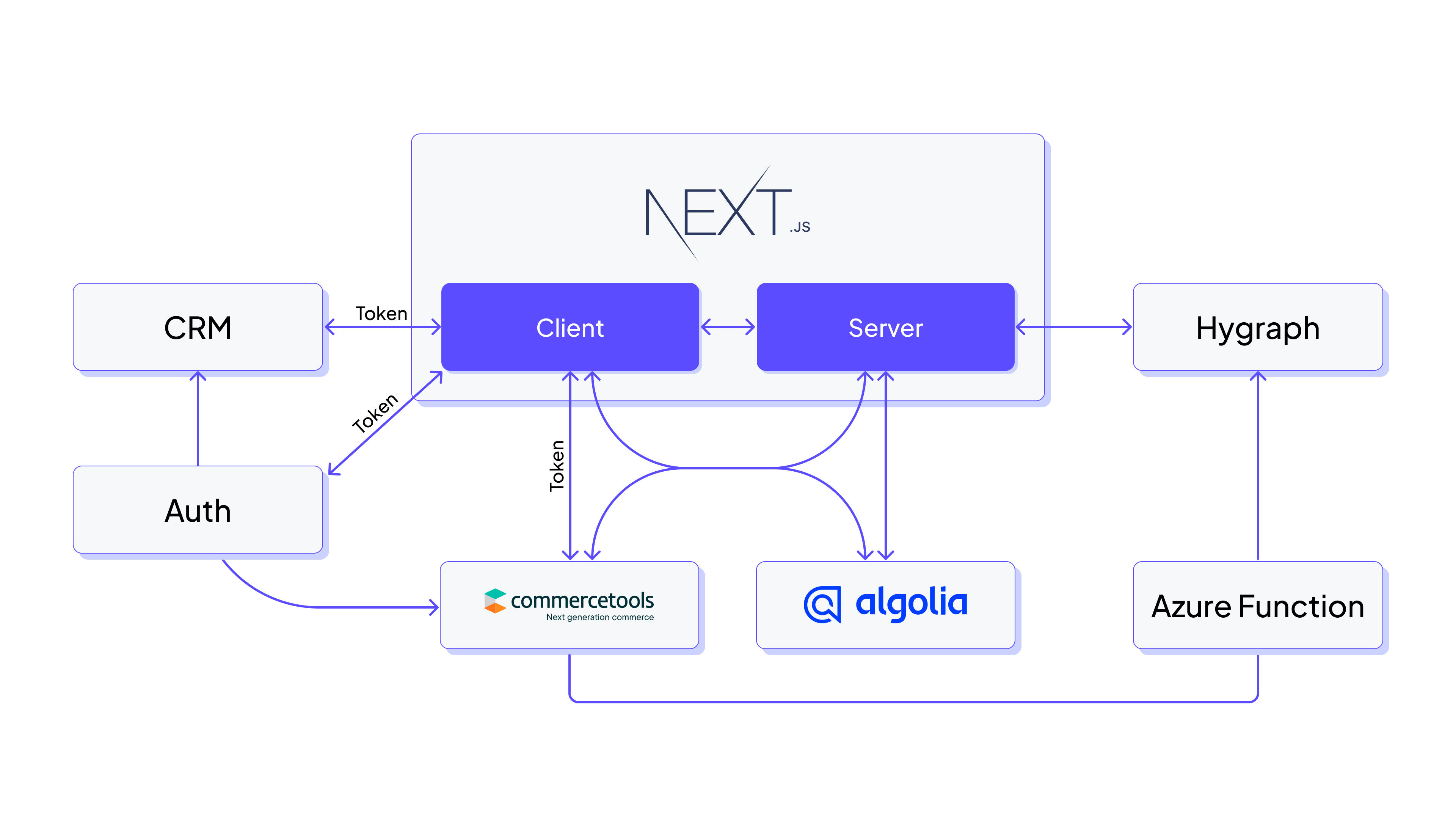In today's fast-paced digital landscape, businesses must deliver engaging and interactive customer experiences. Those who do not simply risk falling behind. Forbes insights report reveals the immense value of customer experience in this day and age:
Source: Forbes Insights Report
With the ever-increasing demand for seamless digital interactions, companies are looking for ways to overhaul their traditional commerce systems. Two major concepts in this digital transformation are "composable commerce" and "headless commerce."
In this blog, we'll delve into the differences between these two approaches and explore why businesses are making the shift.
#Modern commerce is on the rise
To understand composable and headless commerce, we need to step back and examine the evolution of modern commerce. Traditional commerce systems, which surfaced in the 2000s, were initially regarded as all-in-one solutions. However, these systems were primarily designed for desktop sites.
As the adoption of new devices surged, these systems began to feel more rigid and monolithic, struggling to keep pace with the ever-shifting digital landscape. Businesses needed more flexible solutions to provide interactive and personalized experiences to their customers.
Consequently, in the early 2010s, headless commerce emerged to resolve these limitations of monolithic systems. It introduced a clear separation between the frontend and backend of eCommerce architecture, enabling businesses to disseminate content through APIs to various digital touchpoints.
The headless commerce architecture is frontend-agnostic and can seamlessly accommodate custom frontends. This decoupling of components allowed it to offer greater flexibility, empowering companies to swiftly adapt to changing consumer demands.
Nonetheless, despite the flexibility offered by headless commerce systems, they encountered certain challenges. Integrating with numerous custom frontend interfaces often resulted in extended development timelines. Furthermore, business users encountered difficulties in making basic content changes for these diverse frontends, often requiring the help of developers.
Enter composable commerce systems, designed to resolve these drawbacks. Coined by Gartner in their 2020 research on the future of applications, composable commerce took flexibility to the next level while ensuring a streamlined business process.
This approach enables businesses to assemble their commerce stack incrementally with various modular, best-of-breed microservices such as PIM, DAM, CMS, Payment Gateways, and much more.
These services empower non-technical users to govern content presentation through pre-packaged business capabilities. Hence, businesses can cherry-pick the components that suit their specific needs, creating a tailored and efficient system.
#Definetion and principles of composable commerce
Composable commerce is a modern approach to building and managing eCommerce systems that prioritize flexibility, agility, and customization.
At its core, it is based on the principle of modularity, where various commerce services and components are treated as independent building blocks that can be selected, combined, and composed to create a tailored eCommerce solution.
The key principles of composable commerce include decoupling the frontend from the backend, enabling the selection of best-of-breed services for specific functions (such as cart management, payment processing, or product catalog), promoting flexibility in adapting to changing business needs, and facilitating seamless integration with third-party services and APIs.
This approach empowers businesses to rapidly innovate, scale, and adapt their eCommerce capabilities while minimizing vendor lock-in and optimizing resource allocation. Composable commerce responds to the dynamic and evolving nature of the e-commerce landscape, providing organizations with the tools to stay competitive and deliver exceptional customer experiences.
#Composable commerce vs. headless commerce: what's the difference?
To understand the difference between composable and headless commerce, let's visualize their architectures.
View image in full size: Monolithic vs. headless vs. composable commerce system
In the diagram above, you can see the key architectural distinctions between the three systems.
Monolithic commerce systems are rigidly designed for desktop-based websites with tightly coupled frontend and backend components.
Whereas headless commerce systems separate the frontend presentation layer from the backend storage database, allowing businesses to use any custom presentation layer to deliver content.
Composable commerce platforms, on the other hand, offer a modular approach where businesses can select and integrate various best-of-breed microservices to create a customized commerce stack.
Now let’s get into the details and look at how composable commerce and headless commerce are different with a side-by-side comparison:
| Aspect | Composable Commerce | Headless Commerce |
|---|---|---|
| Architecture | A more modular approach that allows you to build a commerce solution by composing various microservices. | Separates the frontend (presentation layer) from the backend (commerce engine). |
| Frontend flexibility | Provides flexibility not only in the frontend but also in the choice of back-end services and components. | Offers greater frontend flexibility, as you can use any technology or platform to build the customer-facing interface. |
| Development speed | Tends to have a faster development pace, as you can independently develop and update different commerce components. | May have slower development speed for frontend changes, as they often require coordination with the backend. |
| Customization | Provides customization options, but with the ability to mix and match third-party services for faster development. | Allows for highly customized user experiences, making it suitable for unique or niche requirements. |
| Vendor lock-In | Offers reduced vendor lock-in, as you can swap out individual services without overhauling the entire system. | Can lead to vendor lock-in, as changing the commerce engine or platform may require significant rework of the frontend. |
| Ecosystem integration | Facilitates easier integration with third-party services and APIs, as each component can be selected and integrated independently. | Integration with third-party services and APIs can be more complex due to the tightly coupled nature of the backend. |
| Maintenance | Maintenance is more straightforward, as you can update or replace specific services without disrupting the entire system. | Maintenance can be more complex, as changes or updates may affect both frontend and backend components. |
To wrap it up, headless commerce separates the frontend and backend but can be less flexible for scaling, while composable commerce takes a more modular approach, allowing for greater flexibility, scalability, and customization by composing various commerce services.
#Architecture example of composable commerce
Now that we've seen the architectural difference, let's see some composable commerce examples from real life.
Unified eCommerce catalog and product experiences
Despite its flexibility, a composable stack comes with the challenge of working out several microservices and orchestrating several APIs into one consistent layer.
As a global brand, Dr. Oetker's stack is built with a multitude of elements developed for different purposes in each of its 40 markets. Consequently, Dr. Oetker's team was tasked with replatforming its website to harmonize its infrastructure.
In order to solve the challenge, Dr. Oetker developed a microservices architecture that incorporates best-of-breed services such as Hygraph CMS, Next.js, Algolia search API, Force.com, Elasticsearch, and many more, delivering a unified catalog and product experience via one orchestration layer, while critical content, promotions, and remote fields communicate with each other via APIs.
Personalized experiences to fly off the shelf
Composable commerce offers brands greater flexibility to provide customized experiences. Vision Healthcare adopted a composable commerce architecture to improve website performance and customer experience.
In order to make the system's components communicative with one another, APIs are of crucial importance. Vision Healthcare previously used a CMS that often crashed when GraphQL queries and caching were needed. The company switched to the GraphQL-based CMS–Hygraph for managing all its content, including product categories, blogs, content pages, and general website settings.
This leap of faith helped Vision Healthcare create a full-featured, composable stack for delivering personalized experiences at scale while integrating CRM, automation platforms, and marketing tools.
#Moving towards composable commerce
So, why should you consider moving towards composable commerce? The answer lies in your consumers' expectations. As the Vice President of Marketing at Optimove puts it, "Today’s customers demand a personalized experience across all digital touchpoints."
Considering Gartner's projection regarding the rise of composability – that by 2025, the majority of new SaaS designs will incorporate both UI-first and API-first access – it becomes evident that the market is ready for this transformation, and now is the best time for you to make the jump.
Your commerce stack must reflect your business goals and customer needs. Composable commerce allows you to build a stack that caters to your unique requirements, ensuring that you can adapt quickly to any market changes.
#What's next?
If you're ready to embrace composable commerce, Hygraph, a Forrester-recognized composable DXP platform, is here to help set up your composable commerce service.
Get in touch with us to explore how you can future-proof your commerce architecture. With its modular approach and seamless integration capabilities, Hygraph’s MACH compliant composable architecture empowers businesses to stay agile and deliver exceptional digital experiences with faster time-to-market.
In the dynamic world of modern commerce, it is critical to have the right tech stack. Make the shift today and meet the evolving demands of your customers.
Blog Author



